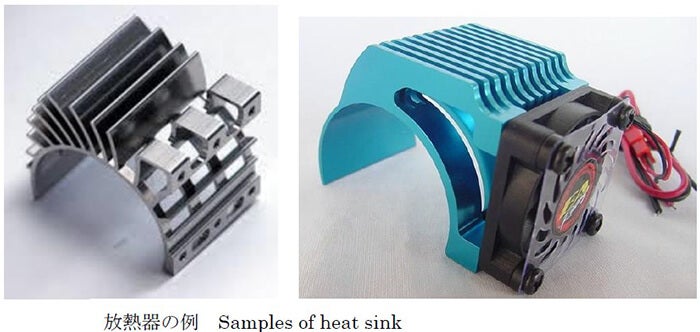Glossary of Motor Terms
Cooling methods
The method of heat removal, or cooling, by Joule loss employed for a motor directly affects the upper limits of the torque or power it can produce. Many motors are air-cooled, where the heat is released directly to the surrounding air. Heat sinks, examples of which are shown below, can be mounted on the motor housing, from which they transfer heat to the surrounding fluid, air in many cases, although this will require some installation space around the motor.
Heat can also be removed through the motor's mount plate. However, this is not always preferable in machine tools since the thermal expansion this results in can adversely affect the machining accuracy.
The relatively compact high-power traction motors of electric vehicles are usually water or oil cooled.
In some applications, the motor is operated while immersed in oil, which has the effect of cooling.
Temperature rise and thermal resistance are two important parameters that must be considered when discussing cooling methods.

Term List (C)
- Capacitor-run motor, Capacitor-start motor
- Carbon brush, Graphite brush, Metallic graphite brush
- Circulating current
- Coercive force, coercive intensity
- Cogging torque
- Commutation
- Commutator, Commutator segment
- Concave and Convex
- Concentrated winding
- Concentric winding
- Concentricity, Eccentricity
- Conductor
- Consequent pole
- Constant-power characteristics
- Construction of a DC motor
- Continuity of magnetic fields
- Cooling methods
- Copper machine, iron machine
- Core, Iron core, Laminated core, Lamination
- Coreless motor
- Coulomb friction
- Coupling,Rigid coupling
- Cylindrical motor
